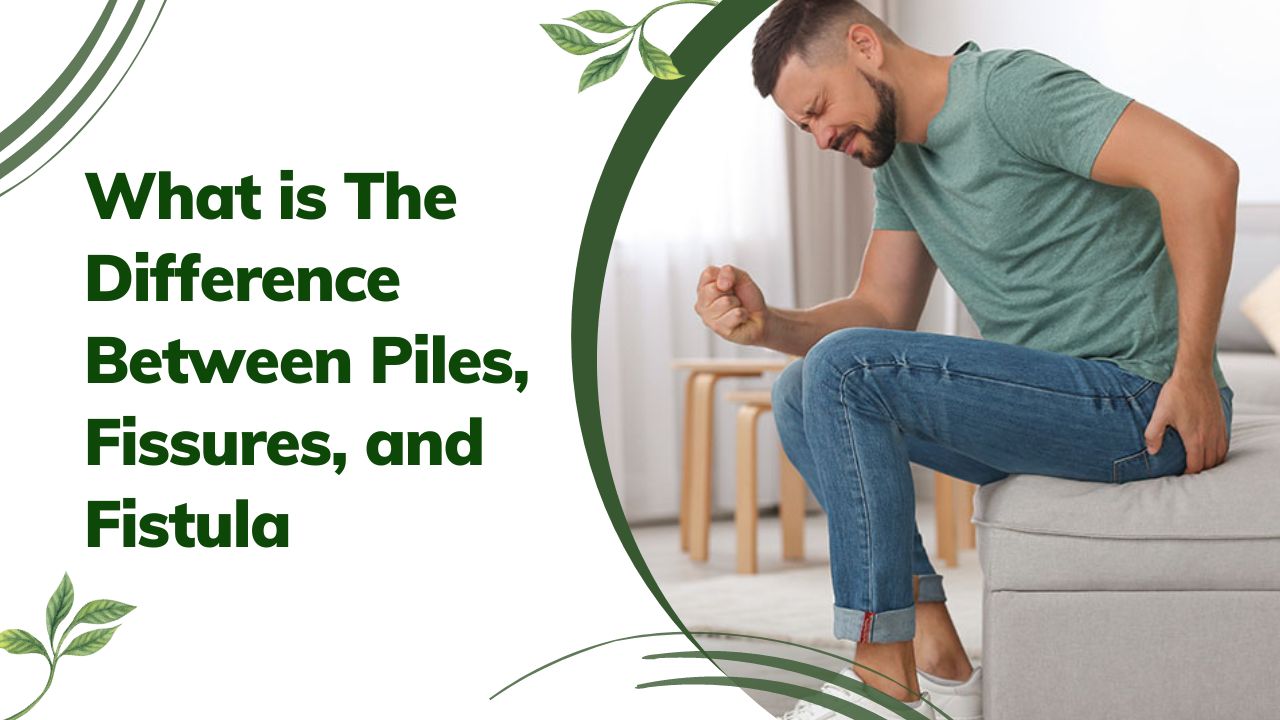What is The Difference Between Piles and Fissures?
Piles, fissures, and fistulas are all common conditions that affect the anus and rectum.
While they may share some similarities and are often grouped together, they are distinct conditions with different causes, symptoms, and treatment options.
Understanding the differences between these three conditions is crucial for proper diagnosis and treatment. Let’s explore each condition in detail.
Piles:
Piles, also known as hemorrhoids, are swollen blood vessels located in and around the anus and rectum. They can be internal (inside the rectum) or external (under the skin around the anus).
Piles are a common problem and are estimated to affect half of all adults at some point in their lives.
They can be caused by various factors, including increased pressure in the veins around the rectum, constipation, straining during bowel movements, obesity, and pregnancy.
Symptoms of piles can include itching, pain, bleeding during bowel movements, swelling, and a lump or bulge around the anus. Internal piles may not cause any symptoms unless they become prolapsed or thrombosed.
Treatment options for piles range from conservative measures, such as lifestyle and dietary changes and using creams or ointments.
Fissures:
Fissures, on the other hand, are small tears or cuts in the lining of the anus. They are typically caused by trauma to the area, often during a hard or large bowel movement.
Fissures are more common in people with constipation or chronic diarrhea. They can also be the result of certain medical conditions like Crohn’s disease or ulcerative colitis.
Fissures can cause severe pain during and after bowel movements, and sometimes bleeding may occur.
The main symptom of a fissure is an intense pain during defecation, which can last for several hours afterward.
Other symptoms may include bright red blood on the toilet paper or in the stool.
Most fissures heal on their own within a few weeks with proper self-care, such as managing constipation and maintaining proper anal hygiene.
However, if the fissure persists or there are complications, medications, creams, or procedures are required.
Fistula:
A fistula is a tunnel or tract that forms between the anal canal or rectum and the skin surrounding the anus. It is typically the result of an abscess (a collection of pus) that has not healed properly.
The abscess can arise due to an infection in the anal glands, which then spreads to surrounding tissues. It can also be caused by diseases like Crohn’s disease or diverticulitis.
Fistulas are characterized by a chronic discharge of pus or stool from an opening near the anus. Other symptoms may include pain, swelling, redness, and irritation around the site of the fistula.
Depending on the complexity and severity, treatment for fistulas can vary.
In conclusion, while piles, fissures, and fistulas may all affect the anorectal region, they are distinct conditions with different causes and symptoms.
Piles involve swollen blood vessels in and around the anus and rectum, while fissures are small tears or cuts in the anal lining.
Fistulas, on the other hand, are tunnels or tracts that form between the anus and the surrounding skin due to an abscess that has not healed properly.
Ayurvedic Treatment for Piles, Fissures and Fistula:
If you are experiencing any symptoms related to these conditions, it is important to consult an Ayurveda expert for an accurate diagnosis and appropriate treatment.
They will be able to provide you with personalized advice based on your specific situation. Remember, early intervention and proper management can lead to better outcomes and improved quality of life.
Dr. Dassan’s Ayurveda provides you the best and effective ayurvedic treatment for piles, fissures and fistula.
This Ayurvedic treatment includes herbal supplements that are prepared with the best quality herbs and strictly follow the principles of Ayurveda.
The herbal supplements like well feel powder for constipation and other associated symptoms are helpful in treating these diseases.
This combination of effective herbs are not only helpful in treating symptoms but also helps to get rid of the disease from its root cause. These herbal supplements are free from colors, additives, and preservatives.

